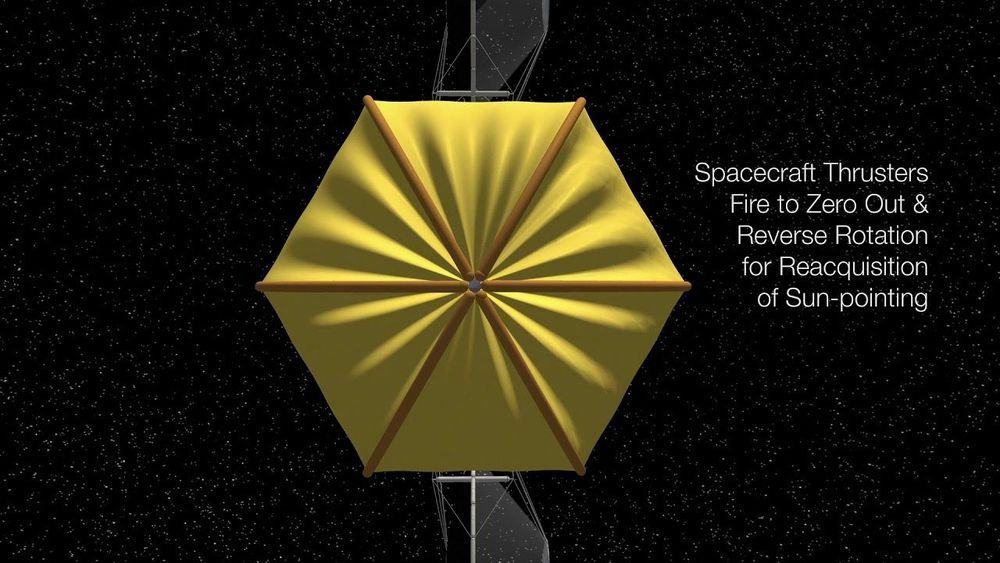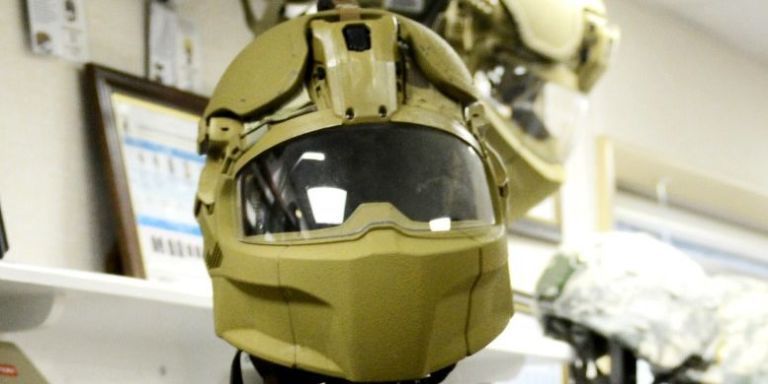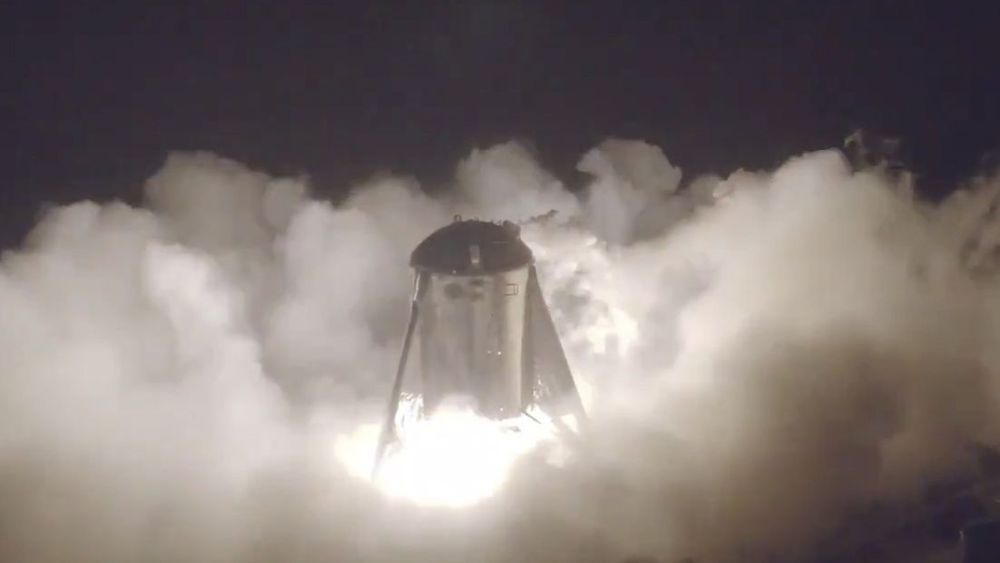Archive for the ‘space travel’ category: Page 295
Aug 20, 2019
APIS: Asteroid Provided In-situ Supplies) is a family of flight systems based on a similar architecture
Posted by Klaus Baldauf in category: space travel

Ranging in size from the experimental Mini Bee , a 250kg technology demonstration spacecraft, through the Honey Bee, capable of capturing a 10m asteroid and extracting its resources, to the Queen Bee, capable of capturing a 40m asteroid for resource extraction. All use an asteroid containment system similar to that proposed for the original Asteroid Redirect Mission, optical mining for resource extraction, and a water based Omnivore™ Thruster system for propulsion. A variant called the Worker Bee, can serve as an orbital transfer vehicle, transporting items to high Earth orbits and beyond, potentially even to Mars.
Aug 20, 2019
Indian spacecraft launched last month is now orbiting moon
Posted by Genevieve Klien in categories: robotics/AI, space travel
NEW DELHI (AP) — An unmanned spacecraft India launched last month began orbiting the moon Tuesday as it approaches the lunar south pole to study previously discovered water deposits.
The Indian Space Research Organization said it successfully maneuvered Chandrayaan-2, the Sanskrit word for “moon craft,” into lunar orbit, nearly a month after it left Earth. The mission is led by two female scientists.
Chandrayaan will continue circling the moon in a tighter orbit until reaching a distance of about 100 kilometers (62 miles) from the moon’s surface.
Aug 19, 2019
Luxembourg company builds 3D printers to create human skin in space
Posted by Klaus Baldauf in categories: 3D printing, space travel
A Luxembourg company is working to develop 3D printers which will create human skin on board a spaceship while out in space.
Space company, Blue Horizon, based in Betzdorf, is working with German company OHB SE – of which it is subsidiary –and the Technical University of Dresden to develop the printers.
Aug 17, 2019
U.S. Army Troops to Get New Sci-Fi Helmet
Posted by Quinn Sena in categories: computing, space travel
Essentially you could use the body and a computer even modify and enhance the processes even modify the wetware making things stronger and faster. Essentially like master chief from the halo series.
The U.S. Army is testing a new helmet designed to offer full ballistic protection to a soldier’s entire head. Looking like something out of Starship Troopers, the Integrated Head Protection System (IHPS) protects a soldier’s entire head, including for the first time the face and jaw, from injury. The helmet, developed by 3M subsidiary Ceradyne Systems, is scheduled to head to the troops next year.
Aug 17, 2019
SpaceX Eats Virgin Galactic’s Dust: Richard Branson Reveals New Spaceport
Posted by Genevieve Klien in categories: food, space travel
Spaceport America, the world’s first purpose-built commercial spaceport standing on the sands of the New Mexico desert, is readying itself to welcome the world’s first space tourists.
And Virgin Galactic will likely be the first to fly these people into outer space. The cost of a seat on a Virgin Galactic spaceflight is $250,000 and 600 people have already paid downpayments for their trips.
Virgin Galactic on Thursday declared Spaceport America “operationally functional” and transferred all its spaceflight operations to this facility. It also revealed the interior of its “Gateway to Space” building at the spaceport.
Aug 14, 2019
SpaceX’s Starhopper Prototype Is Ready for Its Biggest Hop Test
Posted by Genevieve Klien in categories: Elon Musk, space travel
SpaceX’s silver Starhopper prototype could complete its biggest hop test this weekend, according to SpaceX CEO Elon Musk.
Starhopper, which is an early prototype for SpaceX’s Starship spacecraft, has completed a couple of tests so far. According to Musk, the Starhopper’s next challenge will be to fly roughly 650 feet off the ground. Musk recently tweeted that the prototype’s next major hop could take place on Aug. 16, Aug. 17, or Aug. 18, as long as the U.S. Federal Aviation Administration (FAA) gives SpaceX permission to conduct the test flight.
Just spoke with FAA, so hopefully yes.
Aug 13, 2019
There’s a place at the bottom of the Pacific Ocean where hundreds of giant spacecraft go to die
Posted by Alberto Lao in category: space travel
What happens to a spacecraft once it dies?
When a spacecraft completes its mission or runs out of fuel, it’s sent to what NASA calls a Spacecraft Cemetery. Three thousand miles off the Eastern coast of New Zealand and more than 2 miles deep, it’s the one place farthest from any land mass on Earth.
The perfect spot to land giant chunks of spacecraft that are traveling more than 180 mph upon impact. NASA predicts the chance of a spacecraft hitting someone out here to be around 1 in 10,000.
Aug 13, 2019
SpaceX Mars City: Here’s How Much Elon Musk’s Dream Would Cost
Posted by Genevieve Klien in categories: economics, Elon Musk, space travel
How much would it cost to build a city on Mars? According to Elon Musk over the weekend, it could be the most expensive construction project in human history — and cost up to an eighth of the value of the entire global economy.
The SpaceX CEO’s vision includes not only sending the first humans to Mars, but to use that mission as a starting point to build a permanent settlement. Assuming all goes to plan, Musk believes that a self-sustaining city could take shape as early as 2050.
What happens after that point is anyone’s guess. Inverse has spoken to experts from a number of fields, who have flagged a series of issues those first inhabitants will need to address. They could mutate and develop new physical attributes, they could find the city’s confines stifling and develop a national identity, and they could develop a new, ground-up economy.
Aug 13, 2019
SpaceX Now Has a 2nd Boat to Catch Rocket Payload Fairings Falling from Space
Posted by Genevieve Klien in categories: Elon Musk, space travel
The company will soon start employing a second net-equipped boat during orbital launches, in an attempt to snag both halves of its rockets’ payload fairings before they splash down in the ocean, SpaceX founder and CEO Elon Musk confirmed via Twitter on Friday (Aug. 9).

















